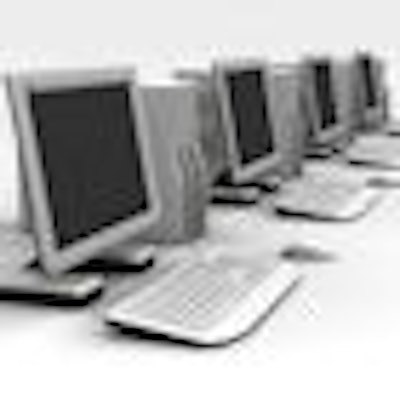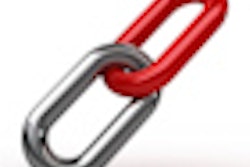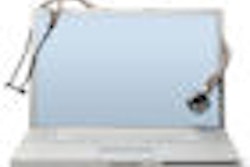
While the U.S. government sorts out its expectations for electronic health records (EHRs) in the dental industry, some vendors and practitioners are already moving ahead.
Part of the American Recovery and Reinvestment Act (ARRA) of 2009 includes guidelines for incentives (starting in 2011) and penalties (beginning in 2015) from Medicaid and Medicare for hospitals, clinics, and healthcare providers who implement -- or fail to implement -- EHR systems in their facilities.
But when it comes to being able to take advantage of these incentives, the dental industry faces some obstacles the others don't, including the small size of most practices, dentistry's absence from Medicare, and some practitioners' limited reliance on Medicaid. A procedure for CCHIT (Certification Commission for Healthcare Information Technology) approval for dental EHRs has yet to be established, making expectations unclear.
"It's a tricky situation," Steve Roberts, director of core products and electronic services at Henry Schein, told DrBicuspid.com. "The 2015 deadline really applies to a practice's ability to demonstrate 'meaningful use' of an EHR system. The deadline is firm, but on the dental side the requirements within a dental practice have yet to be defined, and certification or standards committees still don't exist."
The government's incentive is blunted by considerable variation in dentists' acceptance of Medicaid payments from state to state. The prospect of being one's own IT department among solo practitioners is also daunting. As Robert Patrick, director of product line management at Carestream Dental, put it during an interview with DrBicuspid.com, "We have to figure out how to stay out of dentists' way."
How to get there
At the same time, however, Carestream and other practice management software providers are taking the lead in creating new kinds of software tools that look quite different than their current legacy products.
"The roots in the digitalization of dentists' offices are an accounting system plus a schedule book," Patrick explained. "Here we are 25 years later and many practices are still using only the front office and back office portions of practice management software: billing, claims, financials, and scheduling."
“We jumped on digital charts and EHRs about three years ago.”
— Michael Bourgeault, Pacific Dental
Services
Over the past year, Carestream has been developing new practice management software modules with capabilities gleaned from hundreds of hours of firsthand observation in dental offices. The initial goal, Patrick said, is to use the Internet and other digital communication tools to improve communication and workflow within the office and better connect dentists with their patients.
"It's one of the most interesting things we did," Patrick recalled. "We tried to understand the most important workflows of each role in a practice. Dentist, oral surgeon, or assistant, they've got things they do every day, and you have to prove that your method is faster than the current one."
Last year Carestream launched the Kodak Pearl module, which links practice management software to a smartphone to give dental practitioners mobile access to many aspects of their practice, such as the patient's clinical profile, appointment records, prescriptions, financial status, and clinical images.
"We're also focusing on different ways of connecting with patients," Patrick said. "Missed appointments are a big deal, and direct, convenient communication can avoid that. The adage, 'What's the most expensive room in a hotel? The empty one,' is the same with dental chairs."
Carestream rolled out three Web-based products last month: eReminders, eForms, and an interactive appointment scheduler. But that is only the beginning, according to Patrick. Clinical components of the software will be available next year, laying the foundation for a full-blown dental EHR system.
The first adopters are likely to be oral and maxillofacial surgeons, he noted. They spend much of their time in hospital environments and work closely with other medical professions where government guidelines for EHR integration have already been established. And the technology itself offers many advantages.
"Clinical documentation in an oral surgeon's office is so important," Patrick explained. "It makes it very easy to get it into the system, share it with those that need it, sign it, lock it, and protect yourself in a way that's searchable and electronic."
These same advantages apply to general dentists and other specialists as well, he added.
"Searching through cases for a certain word or diagnosis can be a powerful tool. When you look at a roomful of physical charts, there's a lot of data there -- but being able to pick out the data you need is the tricky part," Patrick said. "Our software has been designed in a way that we're giving them the power to look across all their charts to gain understanding from previous cases."
EHRs in the real world
Carestream is not alone in its view that online technologies and applications offer the dental community many practice management advantages. Pacific Dental Services -- a dental services organization that currently manages 210 dental practices -- has gone digital in all its practices, according to Michael Bourgeault, director of information technology.
"We jumped on digital charts and EHRs about three years ago, not so much due to the legislation but for the core efficiencies of not having walls of charts in the offices," he told DrBicuspid.com. "Doctors tell us, 'I can actually read my notes.' "
The benefit goes well beyond sidestepping indecipherable shorthand, he added.
"We can pull up a record at any workstation and access the same chart at multiple stations simultaneously," Bourgeault explained. "While a dentist uses it chairside, the front desk can be working with it as well. It's huge for us, not having file rooms where we're pulling charts to get ready for the next day."
X-rays, billing, and every other aspect of the practice are digital, which lends itself to standardization, he added. Patients have been brought into the fold too, with some data entry shifted from the staff to the patient.
"We're closing in on having our one millionth patient fill out their dental record patient questionnaire paperwork online," Bourgeault said. "Close to 60% do it from home in a secure, HIPAA-compliant way, while others who don't have the Internet -- which is rarer and rarer -- do it from a kiosk at our practice."
The government's 2015 deadline is almost a moot point, he added. "Our group is ready and hopes to be the first up to bat. We intend to embrace the incentives."
Even so, he noted, there is always room for improvement.
"We may love our model today and hate it tomorrow, so we stay on our toes," Bourgeault said. "We're constantly preparing for the future." For example, he envisions one day handing a patient an iPad to amuse him or herself in the waiting room and handing it off to the dentist to log in securely when the appointment begins.
Merging with the rest of medicine
At Henry Schein, Roberts sees the big-picture value of the effort to go digital with EHRs. "I do think that if it were possible to have them all in a centralized depository it would tell untold stories of how to diagnose disease and treat it," he said. "That's one reason the healthcare reform act was put in place -- because they hoped it'd allow healthcare providers to, based on more information, draw better, faster conclusions and be more preventive than reactive."
The acceptance of EHRs in dentistry can play a key role in furthering the understanding of how oral health affects overall well-being, he noted. Toward that end, Henry Schein has worked to make the sharing of dental EHRs with other medical professions feasible through its Dentrix software, Roberts said.
"Interoperability is key. EHRs must be able to communicate with other digital systems," he said. "HL7 is the data standard that is used to exchange patient data between systems, and Dentrix can interact with them. As all medical realms become compliant, we can achieve the opportunity to tie systemic disease in with oral health."
Carestream's Patrick agrees. "That should be our goal," he said. "When you think about oral health in relation to the health of the rest of the body -- it's not separate. The endgame is being able to have the sort of system enabling sharing and connectedness that will lead to greater knowledge of human health."
Copyright © 2010 DrBicuspid.com



















